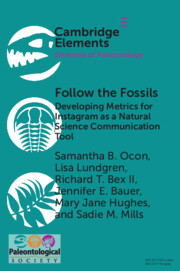Element contents
Follow the Fossils
Published online by Cambridge University Press: 10 November 2021
Summary
- Type
- Element
- Information
- Series: Elements of PaleontologyOnline ISBN: 9781009157476Publisher: Cambridge University PressPrint publication: 09 December 2021



